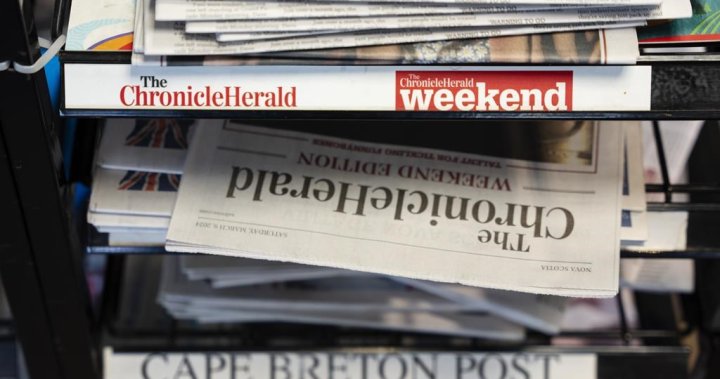
SaltWire’s money woes a sign of bigger problems in the newspaper business: experts
Global News
On Monday, a private equity firm that has lent money to SaltWire filed documents to initiate insolvency proceedings against the Halifax-based company.
The recent decision by SaltWire Network Inc., Atlantic Canada’s largest newspaper company, to seek protection from its creditors is another sign of the decline of the business and the growing threat to local journalism, experts said Tuesday.
“We’re seeing a resurgence in a steady spate of closings and scaling back of local news operations,” said April Lindgren, a professor with Toronto Metropolitan University’s journalism program. “If anything, it’s at an accelerated pace.”
SaltWire publishes four daily newspapers: the Chronicle Herald in Halifax; the Cape Breton Post in Sydney, N.S.; the Guardian in Charlottetown and the Telegram in St. John’s, N.L. — as well as 14 weekly publications in every Atlantic province except New Brunswick.
On Monday, a private equity firm that has lent money to SaltWire filed documents in the Supreme Court of Nova Scotia to initiate insolvency proceedings against the Halifax-based company. The Fiera Private Debt Fund claims SaltWire owes the firm tens of millions of dollars after several years of mismanagement.
“It points to the continued peril of local journalism in any format these days,” said Lindgren, principal investigator for the Local News Research Project, which tracks the fate of newspapers, broadcast outlets and online news sources across Canada.
SaltWire’s chief operating officer, Ian Scott, has said the company is facing “unprecedented challenges.” However, he said business will continue as usual as the company hopes to restructure its operations and finances.
Lindgren said many media businesses resumed cutting costs and shutting down operations after the pandemic, when government subsidies dried up. Meanwhile, advertising revenue has not recovered to pre-pandemic levels, and potential readers have shown a recent reluctance to pay for digital subscriptions, she said.
As a result, the mainstream media’s business model remains in tatters as digital platforms such as Meta and Google continue to gobble up advertising dollars.













